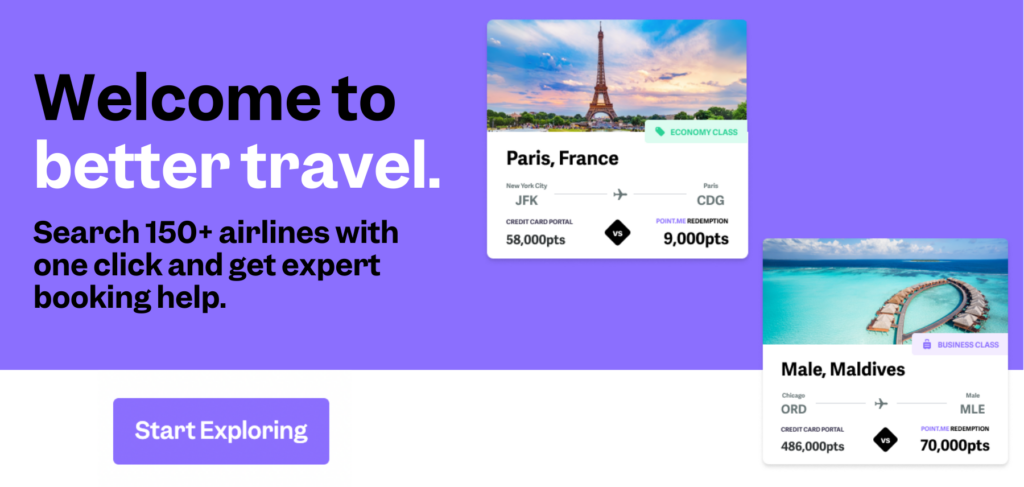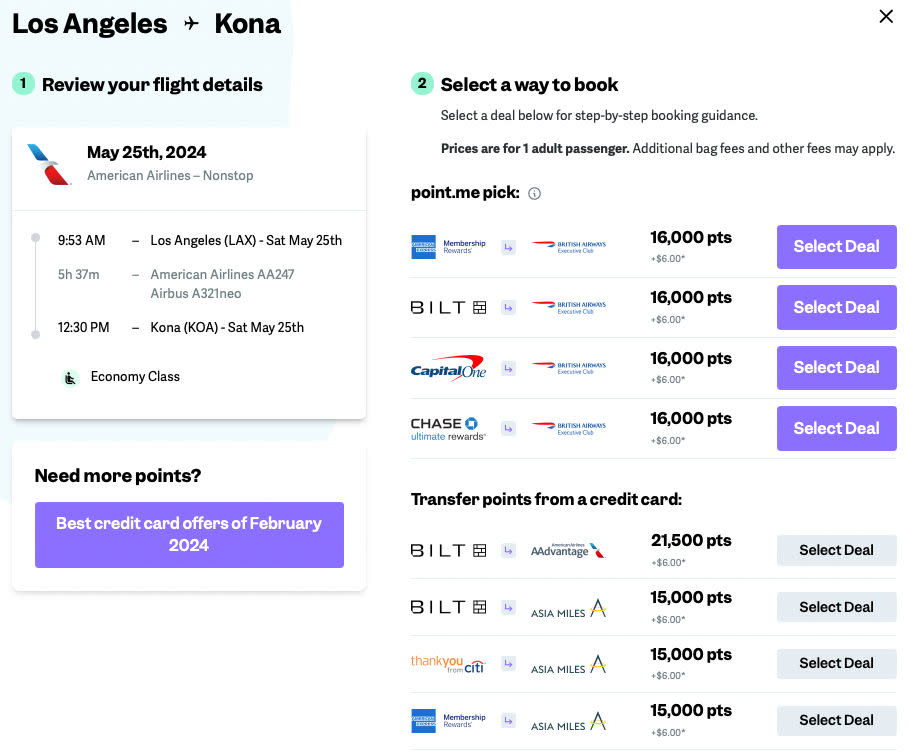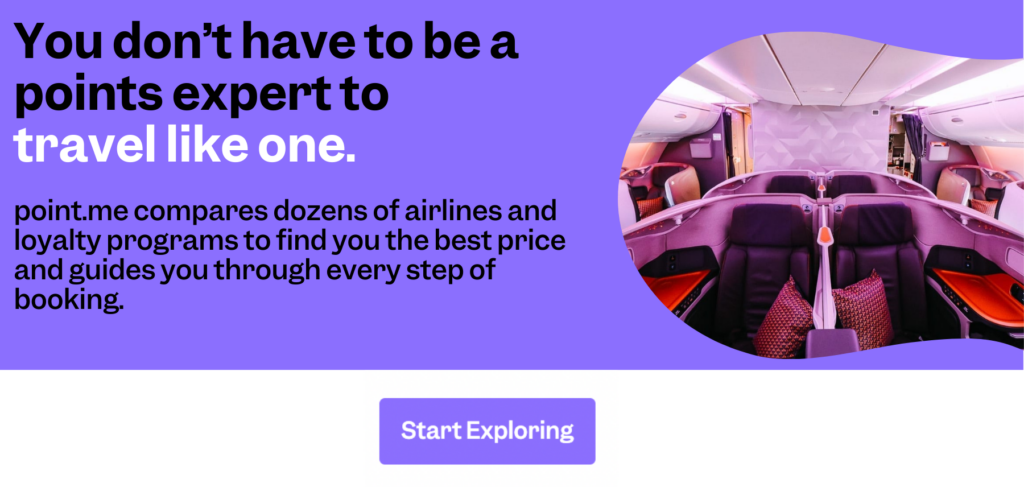Contents
- 1.
- 2.
- 3.
Did you know that most airlines today are part of a larger alliance? The big three — Star Alliance, Oneworld, and SkyTeam — bring airlines together, creating a network that lets you connect seamlessly as you explore the world. Imagine booking a flight with one airline but enjoying the perks and convenience of other carriers within the same alliance, including checking your bag across multiple airlines and only needing to check in once.
Let's have a look at airline alliances, why they exist, how to leverage these partnerships to find and book better flights with points.
What's an airline alliance?
Put simply, an airline alliance allows different airlines to streamline their services. No single airline can fly across the world, so rather than having passengers book 10 different tickets to get from Point A to Point B, airline alliances were created.
These alliances are partnerships between varying international airlines, their main goal being to make it easier for travelers to fly. This means purchasing a single ticket, checking your bag once, and only checking in at your departure airport to get all the way to your destination, even when flying on multiple airlines.
Why did alliances form, and what's in it for the airlines?
Airline alliances were formed with the primary goal of improving efficiency, expanding global reach, and providing enhanced services for travelers.
The first alliance, Star Alliance, launched in 1997, uniting five airlines to create a comprehensive network that offered shared resources, smoother connections, and a consistent passenger experience. As the largest airline alliance, today you'll find carriers such as United Airlines, Air Canada, Lufthansa, and Swiss as Star Alliance members.
Soon after, in 1999, Oneworld debuted for much the same reason. American Airlines, Alaska Airlines, British Airways, Cathay Pacific, and more are a part of this second large alliance.
The newest of the global airline alliances, the SkyTeam alliance, was created in 2000 and includes members such as Delta Air Lines, Air France-KLM, and Virgin Atlantic.
The three major airline alliances and who's in them
Airlines in Star Alliance
As we noted earlier, Star Alliance is the biggest of the three major airline alliances, with a total of 26 members. You'll likely recognize quite a few of them, as they have a large presence in North America and Europe:
Aegean Airlines
Air Canada
Air China
Air India
Air New Zealand
ANA - All Nippon Airways
Asiana Airlines
Austrian Airlines
Avianca
Brussels Airlines
Copa Airlines
Croatia Airlines
EgyptAir
Ethiopian Airlines
EVA Air
LOT Polish Airlines
Lufthansa
Scandinavian Airlines (SAS)
Shenzhen Airlines
Singapore Airlines
South African Airways
SWISS
TAP Air Portugal
Thai Airways
Turkish Airlines
United Airlines
Note that Scandinavian Airlines (SAS) is leaving Star Alliance and joining SkyTeam later this year. Learn more with our Star Alliance guide.
Read the point.me guide to Star Alliance.
Airlines in SkyTeam
Although it’s the youngest of the global airline alliances, SkyTeam boasts a full 20 member airlines. Even though it features fewer members than Star Alliance, SkyTeam still has a global reach, as you can see:
Aeroflot (suspended)
Aerolíneas Argentinas
Aeroméxico
Air Europa
Air France
China Airlines
China Eastern Airlines
Czech Airlines
Delta Air Lines
Garuda Indonesia
ITA Airways
Kenya Airways
KLM Royal Dutch Airlines
Korean Air
Middle East Airlines
Saudia
TAROM
Vietnam Airlines
Virgin Atlantic
Xiamen Airlines
Learn more with our SkyTeam guide.
Airlines in Oneworld
Oneworld is the smallest airline alliance with just 13 members, but with such a strong network, it'll still get you where you need to go:
Alaska Airlines
American Airlines
British Airways
Cathay Pacific
Finnair
Iberia
Japan Airlines
Malaysia Airlines
Qantas
Qatar Airways
Royal Air Maroc
Royal Jordanian
SriLankan Airlines
In addition to the alliance members listed above, Fiji Airways is a Oneworld Connect member, which means passengers will have limited benefits and reciprocity when flying the airline. Oman Air is also a future Oneworld member. Learn more with our guide to Oneworld alliance.
Read point.me's guide to the Oneworld alliance

How do alliances work for miles and rewards?
Sure, it's all well and good to be able to check your bag all the way to Timbuktu (which is located in Mali, in West Africa, by the way), but there's more to airline alliances than seamless travel and codeshare flights. Members of any of the major alliances are also able to earn and redeem rewards with their partners.
In practice, this means that someone who is a member of United's frequent flier program can use their miles to book a flight with Thai Airways. Similarly, a frequent flyer with American Airlines miles can redeem miles for tickets flown entirely with British Airways.
What makes this even more intriguing is that each airline is going to charge its own number of miles for the flights it operates as well as partner flights — and the differences are stark.
Example: flights to Hawaii
Vacationing in Hawaii is a bucket-list item for many, but it can often feel out of reach. However, thanks to alliance partners and mileage redemptions, nabbing an award flight to Hawaii can be simple.
Here's a look at a one-way flight from Los Angeles (LAX) to Kona (KOA) on Hawaii's Big Island. A quick point.me search shows us that American Airlines wants to charge 21,500 miles for its nonstop flight.

However, thanks to airline alliances, you can instead choose to use 16,000 British Airways Avios or even 15,000 Asia miles (the currency of Cathay Pacific) to book this same flight.
What additional benefits do I receive through the alliance?
Easy transit and low-cost mileage redemptions aren't the only benefits of these global alliances. Along with these benefits, elite members of frequent-flier programs can enjoy reciprocity among varying airlines.
You won't get the full star treatment when flying on a partner airline versus the one where you earned your elite status, but the benefits can be really good. Depending on which of the three major alliances you're flying and the frequent-flier status you have, you can expect the following perks:
Extra baggage allowance
Airport lounge access
Priority baggage handling
Priority boarding
Priority check-in
Preferred seating
Priority reservations waitlist
Priority stand-by
Access to sold-out flights
Expedited airport security
Note that each of the three main global alliances has two levels of status you can achieve (that correspond with the status you earn on your personal airline).
Star Alliance
Star Alliance Silver status
Star Alliance Gold status
SkyTeam
SkyTeam Elite
SkyTeam Elite Plus
Oneworld
Oneworld Sapphire
Oneworld Emerald
What other types of airline partnerships are there?
Although we've focused so far on the three major airline alliances and their members, they don't actually comprise all the airline partnerships you'll find when flying.
For example, Emirates isn't a member of any alliance, but it has cultivated partnerships with a variety of different airlines. This includes Star Alliance, Oneworld, and SkyTeam members, so booking a flight using your miles is still entirely possible.
You'll find other airline partnerships scattered around, especially when it comes to smaller regional airlines. However, you'll always want to double-check the conditions of the partnership. United Airlines and JSX, for instance, have a partnership where you'll be able to earn United miles on your JSX flights, but you won't be entitled to additional benefits, such as airport lounge access or additional checked baggage, despite their agreement.
Are there credit cards that partner with airline alliances?
In short: No, there aren't credit cards that partner with any airline alliances. Although there are plenty of co-branded credit cards offered by airlines, including American Airlines, Delta Air Lines, United Airlines, and even Air France, no card inherently partners with an airline alliance.
However, the miles that you earn from your airline credit card can be used to book flights with the alliances we've been discussing. So although your American Airlines credit card is going to earn AAdvantage miles, those miles can be used for Oneworld flights with partners such as British Airways, Japan Airlines, and more.
Of course, with point.me, you don't need to worry about any of this — we’ll figure out the best ways to use your mileage so you won’t have to.
How do I book award travel on partner airlines?
It can be difficult to find and book award travel on partner airlines, especially if you don't have a lot of familiarity with all the programs around. You can check each airline's website to see how much they'll charge for a flight, but there's a better way.
With point.me, we do all the work to provide you with the most comprehensive options, so you can confidently redeem points without having to delve into the nitty-gritty details of each airline’s loyalty program.

Frequently asked questions about airline alliances
What are the three main airline alliances?
The three main airline alliances are Star Alliance, SkyTeam, and Oneworld.
What airlines are partnered with each other?
Every airline has different partnerships with other airlines. Members of each airline alliance partner with other members of the alliance, but they'll maintain partnerships with individual airlines too. Your best bet is to check each airline's partner page to see with whom they partner.
Which is better: SkyTeam or Star Alliance?
Star Alliance is older than SkyTeam and has more member airlines. That said, both alliances have global reach and a large domestic U.S. airline within their ranks.
What do airline alliances do?
Airline alliances allow travelers to move easily from one airline to another without fuss. Along with allowing them to book one ticket for multiple flights, it also means checking your bag just one time, receiving elite status recognition on partner airlines, and being able to earn and redeem miles on all your flights.
What is an alliance flight?
A flight taken with an airline who is a member of an airline alliance can be simpler than with one who is not. This is because partnerships allow for smoother travel overall.
What is a codeshare flight?
A codeshare flight is when one airline has a flight number on another airline's flight. For example, United may have a codeshare flight with Lufthansa. Lufthansa is the one actually operating the flight; it'll be a Lufthansa plane with Lufthansa crew and its own Lufthansa flight number. However, United also has its own United-branded flight number on this flight, allowing it to easily sell tickets to customers.
Which airlines are affiliated with each other?
Many different airlines have affiliations with one another. Those who are members of SkyTeam, Star Alliance, and Oneworld are all affiliated, though you'll regularly see non-alliance partnerships among airlines as well.
What is the best airline alliance to join?
Travelers can't actually "join" an alliance; rather, you'll want to join the specific frequent-flier programs of the airlines you choose to fly. The best one to join will depend on which airline you fly regularly, whether you'd like to earn elite status, and how often you're looking to redeem miles.
Using point.me for faster, cheaper redemptionspoint.me was created to take the manual labor out of redeeming your miles. Instead of checking the cost of flights on a dozen different websites, our real-time search and booking engine does the work for you. All you need is your travel dates, where you're going, and who's with you. Not only will we find the flights for you, we'll also recommend the best ways for you to book — and you’ll barely need to lift a finger. Try it today.



